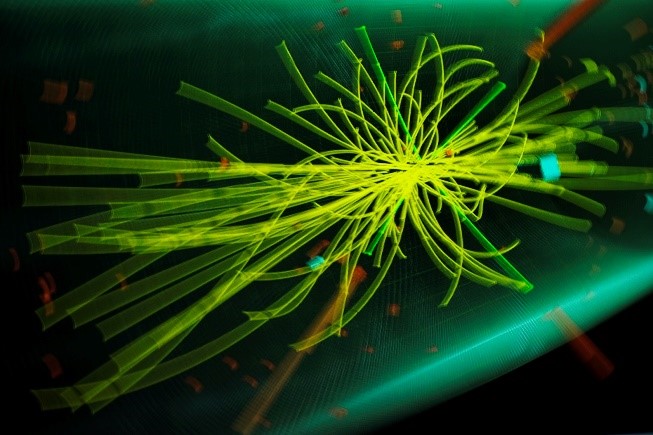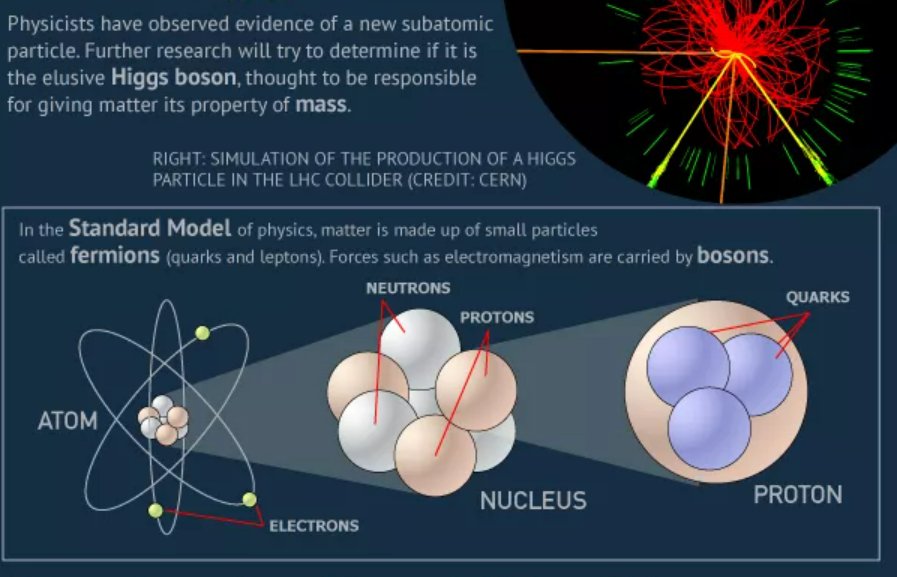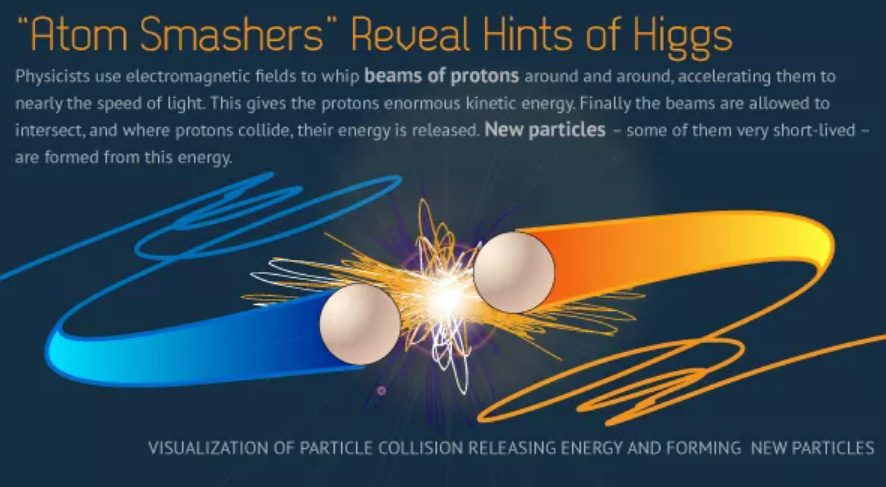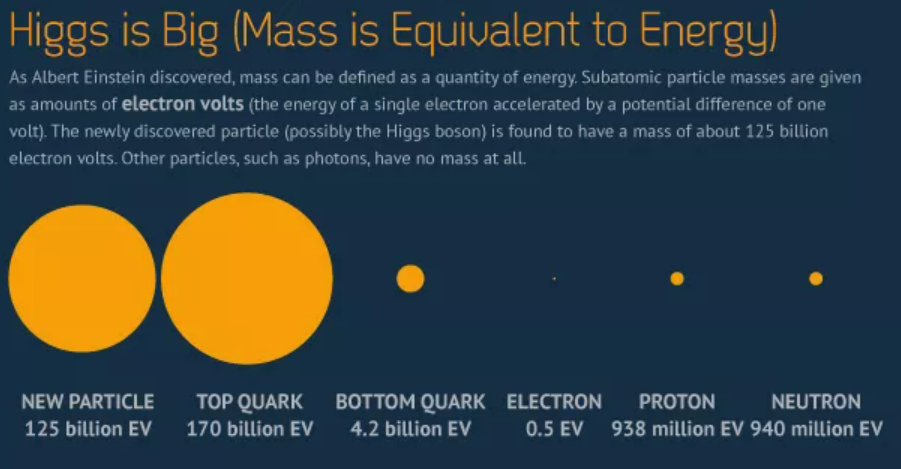Description

Disclaimer: Copyright infringement not intended.
Context
- The European Organization for Nuclear Research (CERN), which hosts the Large Hadron Collider,(LHC) announced that scientists at the organization found the first evidence of the rare process by which the Higgs boson decays into a Z boson and a photon.
Higgs Boson
- The discovery of the Higgs boson, what some call the “God Particle,” in 2012 marked a major milestone in the study of particle physics.
- The Higgs boson is the fundamental force-carrying particle of the Higgs field, which is responsible for granting other particles their mass.
- The Higgs boson has a mass of 125 billion electron volts — meaning it is 130 times more massive than a proton.
- It is also chargeless with zero spin — a quantum mechanical equivalent to angular momentum.
- The Higgs Boson is the only elementary particle with no spin.



Decay of the Higgs boson
- At the Large Hadron Collider Physics (LHCP) research teams reported how they discovered evidence of the Higgs boson decaying into a Z boson and a photon.
- The Z boson is the electrically neutral carrier of the weak force and the photon is the carrier of the electromagnetic force.
- The Higgs boson particle’s decay into a Z boson and photon is similar to that of a decay into two photons.
- In these cases, the particle does not directly decay into these pairs of particles. Instead, it happens through, and “intermediate loop of virtual particles” that come into and out of existence but cannot be detected directly.
- These “virtual” particles could include new and so far unknown particles that interact with the Higgs boson.
Significance
- This decay could provide indirect evidence of the existence of particles beyond those predicted by the Standard Model of particle physics.
|
Standard Model of Particle Physics
- There’s a framework of rules that describes how the elementary particles of our universe look and behave that physicists have spent decades putting together, called the Standard Model.
- Thus, the Standard Model of particle physics describes the properties and behaviour of elementary particles.
Boson
- In particle physics, a boson is a type of particle that obeys the rules of Bose-Einstein statistics.
- Bosons are sometimes called force particles, because it is the bosons that control the interaction of physical forces, such as electromagnetism and possibly even gravity itself.
Fundamental Bosons
- According to the Standard Model of quantum physics, there are a number of fundamental bosons, which are not made up of smaller particles. This includes the basic gauge bosons, the particles that mediate the fundamental forces of. These four gauge bosons have spin 1 and have all been experimentally observed:
-
- Photon - Known as the particle of light, photons carry all electromagnetic energy and act as the gauge boson that mediates the force of electromagnetic interactions.
- Gluon - Gluons mediate the interactions of the strong nuclear force, which binds together quarks to form protons and neutrons and also holds the protons and neutrons together within an atom's nucleus.
- W Boson - One of the two gauge bosons involved in mediating the weak nuclear force.
- Z Boson - One of the two gauge bosons involved in mediating the weak nuclear force.
|
READ ABOUT LARGE HADRON COLLIDER
https://www.iasgyan.in/daily-current-affairs/large-hadron-collider
|
PRACTICE QUESTION
Q. Consider the following statements:
1. The Gluons are the electrically neutral carrier of the weak force.
2. Z Boson particles mediate the interactions of the strong nuclear force, which binds together quarks to form protons and neutrons and also holds the protons and neutrons together within an atom's nucleus.
Which of the above statements is/are incorrect?
(a) Only 1
(b) Only 2
(c) Both 1 and 2
(d) Neither 1 nor 2
Correct Answer: (c) Both 1 and 2
|
https://indianexpress.com/article/technology/science/higgs-boson-decay-large-hadron-collider-cern-8640745/

















